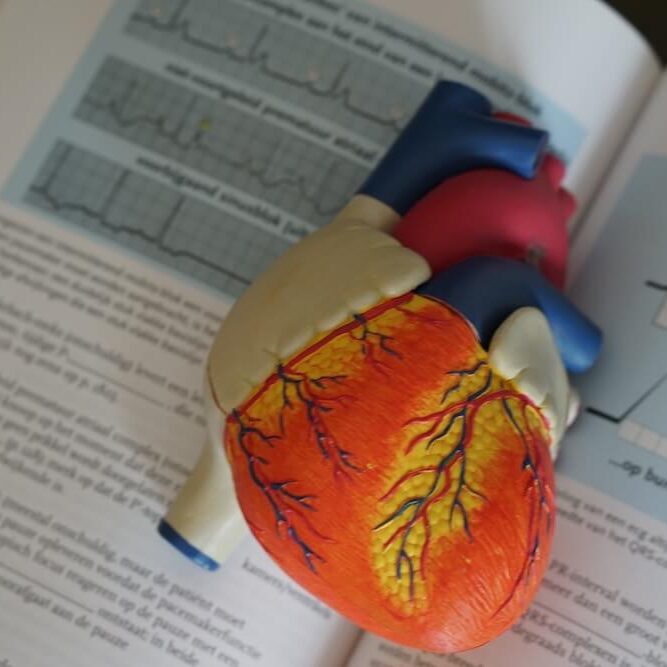Angiogram vs Angioplasty: Everything You Need to Know
An angiogram is an essential diagnostic test that helps doctors identify and treat various cardiovascular diseases. It's a minimally invasive procedure that involves the use of X-rays to visualize blood vessels. We have invested significantly in ensuring our Cath lab is fitted with the latest in 3d imaging technology, and our cardiology clinic in Dubai is staffed by a handpicked team of world-leading experts.
In this comprehensive guide, we'll explore what an angiogram is, how it works, and what you can expect before, during, and after the procedure.
WHAT IS AN ANGIOGRAM?
Angiograms, also known as arteriography, is a medical imaging technique that has been used for several decades. The history of angiogram dates back to the early 20th century when German physician Werner Forssmann performed the first angiogram on himself.
He achieved this by inserting a catheter into his own arm and threading it up to his heart to take an X-ray image of his heart. This was a significant breakthrough in the field of medicine and paved the way for further advancements in angiography.
In the 1920s, a technique called selective arteriography was introduced, which allowed for the visualization of individual blood vessels. In this technique, a catheter was inserted into a specific artery, and a contrast dye was injected to make the blood vessels visible on X-ray images.

Coronary Angiography
Coronary angiography, which is used to visualize the arteries of the heart, was first introduced in the 1950s. It was initially an invasive procedure that involved inserting a catheter into the heart through the groin or arm. Advancements in technology have made the procedure less invasive and it can now be done through the wrist.
Cerebral Angiography
Cerebral angiography, which is used to visualize the blood vessels in the brain, was first introduced in the 1920s. It was initially performed using a technique called pneumoencephalography, which involved injecting air into the spinal fluid and tilting the patient's head to visualize the brain's blood vessels.
This technique was invasive and uncomfortable for the patient. In the 1950s, a new technique called carotid angiography was introduced, which involved inserting a catheter into the carotid artery to visualize the brain's blood vessels.
Pulmonary Angiography
Pulmonary angiography, which is used to visualize the blood vessels in the lungs, was first introduced in the 1960s. It is primarily used to diagnose pulmonary embolism, which is a blood clot in the lungs.
The procedure involves inserting a catheter into the pulmonary artery and injecting a contrast dye to make the blood vessels visible on X-ray images.
Peripheral Angiography
Peripheral angiography, which is used to visualize the blood vessels in the arms, legs, and other parts of the body, was first introduced in the 1940s. The procedure involves inserting a catheter into the blood vessel of interest and injecting a contrast dye to make the blood vessels visible on X-ray images.
What About Angioplasty?
Angioplasty is a minimally invasive procedure that is commonly used to treat blockages in the arteries that supply blood to the heart. It involves the use of a small balloon that is inflated inside the blocked artery to open it up and restore blood flow. The first angioplasty procedure was performed in 1977 by Dr. Andreas Gruentzig in Zurich, Switzerland. This groundbreaking procedure revolutionized the treatment of coronary artery disease, which is the leading cause of death worldwide.
Since then, angioplasty has evolved significantly, and newer techniques have been developed to improve outcomes and reduce the risk of complications. One such technique is known as stenting, which involves the insertion of a small mesh tube called a stent into the blocked artery to help keep it open. Drug-eluting stents, which release medication over time to prevent the artery from narrowing again, have also been developed and are widely used.
Angiogram vs Angioplasty
While angiogram and angioplasty are both used to diagnose and treat cardiovascular disease, they are fundamentally different procedures. Angiogram is a diagnostic procedure that involves the injection of a contrast agent into the blood vessels to visualize them on X-rays. Angioplasty, on the other hand, is a therapeutic procedure that involves the physical removal or displacement of the blockage in the artery.
In cases where a blockage is discovered during an angiogram, angioplasty may be performed immediately to restore blood flow and prevent further damage to the heart muscle. However, in some cases, the blockage may be too severe or located in a difficult-to-reach area, and open-heart surgery may be required.
It's important to note that while angioplasty is a relatively safe and effective procedure, it does carry some risks, including bleeding, infection, and damage to the blood vessels or organs. Additionally, while angioplasty can provide immediate relief of symptoms and improve blood flow to the heart, it is not a permanent solution, and lifestyle changes and ongoing medical management are typically required to prevent future blockages from developing.
MEET OUR CARDIOLOGY DEPARTMENT
- All
- Cardiac Surgery
- Cardiology
Preparing for an Angiogram
Preparing for an angiogram is an important step in ensuring a successful procedure. Your doctor will give you specific instructions to follow before the test, which may include fasting for several hours before the procedure. This means that you won't be allowed to eat or drink anything for a certain period of time, usually starting at midnight the night before your test. It's important to follow these instructions carefully, as eating or drinking anything could affect the accuracy of the test results.
In addition to fasting, you may also be instructed to avoid certain medications, particularly those that thin the blood, such as aspirin, ibuprofen, or blood thinners like warfarin. These medications can increase the risk of bleeding during and after the procedure. If you're taking any of these medications, your doctor will advise you on when to stop taking them and for how long.
It's also important to inform your doctor of any allergies or medical conditions you have before the procedure. If you have allergies, your doctor may prescribe medications to prevent an allergic reaction during the procedure. If you have a medical condition, such as kidney disease or diabetes, your doctor may need to adjust your medications or take other precautions to ensure that the procedure is safe for you.
On the day of the procedure, you'll need to wear loose, comfortable clothing and leave all jewelry and valuables at home. You may also need to remove contact lenses or dentures before the procedure. It's important to arrive at the hospital or clinic on time, as the procedure may be delayed if you're late.
Finally, you'll need to arrange for someone to take you home after the procedure. This is because the sedative used during the procedure can cause drowsiness and impair your judgment and reflexes, making it unsafe for you to drive or operate machinery. You'll need to arrange for someone to stay with you for the first 24 hours after the procedure to ensure that you're safe and comfortable.
WHAT HAPPENS DURING AN ANGIOGRAM?
During an angiogram, the patient is generally awake but sedated to help them relax during the procedure. The process typically involves inserting a small tube, or catheter, into a blood vessel, most commonly in the groin area. In some cases, the catheter may be inserted into the arm or wrist instead. Your doctor will decide which entry point is best based on the location of the blood vessels being studied.
Once the catheter is in place, the dye is injected into the bloodstream through the tube, and X-rays are taken to create images of the blood vessels. You may feel a warm sensation as the dye spreads throughout your body, but this should only last for a few seconds. You'll need to remain still during the procedure to ensure clear images can be captured.
In some cases, the doctor may perform an angioplasty during the angiogram. Angioplasty is a procedure that involves widening a narrow or blocked blood vessel using a small balloon. During an angioplasty, the doctor will guide a catheter with a deflated balloon on its tip to the site of the blockage. The balloon is then inflated, compressing the plaque against the walls of the blood vessel and widening the channel. This allows blood to flow more freely and can relieve symptoms such as chest pain or shortness of breath.
It's important to discuss the risks and benefits of these procedures with your doctor and understand what to expect before, during, and after the procedure. Your doctor may advise you to stop taking certain medications before the angiogram, such as blood thinners or aspirin, to reduce the risk of bleeding. They may also give you specific instructions about what to eat or drink before the procedure and when to stop.
It's normal to feel anxious or nervous about an angiogram or angioplasty, but remember that these procedures can provide valuable information about the health of your blood vessels and help your doctor determine the best course of treatment.
